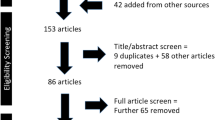The search for new drugs to reduce the toxic effects of alcohol on the body is based on the creation of various pharmaceutical agents that affect the toxicokinetics and/or toxicodynamics of ethanol. A differentiated approach is needed in the pharmacotherapy of alcoholism due to the different clinical typologies of the condition. Compared with synthetic drugs, herbal remedies have multiple types of activity, which complement their efficacy. Research and development of technology for the manufacture of new drugs based on the hairy agrimony (Agrimonia pilosa) are promising. Experimental studies in which white outbred mice were tested in an open field showed that a hairy agrimony extract reduced orientational-exploratory behavioral activity and contributed to adaptation of the animals to stress. Mice treated with agrimony extract showed a reduction in sensitivity to administration of ethanol: the latent period of falling asleep was reduced by a factor of 1.6 and the duration of sleep decreased by a factor of 3 compared with the group of mice given starch paste. Rats treated with agrimony extract at doses of 100 and 150 mg/kg showed reductions in the duration of ethanol-induced sleep by factors of 1.8 – 2.4 as compared with animals treated with St. John’s wort extract, indicating that the extract had a detoxifying effect. Hairy agrimony extract significantly reduced grooming in all groups of animals, this being associated with its anti-anxiety effect and of great importance in terms of reducing the development of delirium in acute alcohol intoxication.
Similar content being viewed by others
References
N. A. Bokhan, A. I. Mandel’, S. A. Ivanova, et al., Vopr. Narkol., 1, 26 – 62 (2017).
M. G. Uzbekov, Sots. Klin. Psikhiatr., 24(4), 97 – 103 (2014).
I. Yu. Shamakina, T. V. Proskuryakova, A. V. Stanishevskaya, et al., Vopr. Narkol., No. 2 – 3, 86 – 108 (2017).
T. V. Shushpanova, A. V. Solonskii, T. P. Novozheeva, and V. V. Udut, Byull. Éksperim. Biol. Med., 156(12), 779 – 785 (2013).
T. V. Shushpanova, N. A. Bokhan, V. F Lebedeva, et al., J. Psychiatry, 19, 3 (2016); doi: https://doi.org/10.4172/2378-5756.1000365.
V. P Grinevich, V. V. Nemets, E. M. Krupitskii, et al., Obozr. Psikhiatr. Med. Psikhol. im. V. M. Bekhtereva, 56(3), 13 – 29 (2022); doi: https://doi.org/10.31363/2313-7053-2022-56-3-13-29.
A. O. Kibitov, I. P. Anokhina, Vopr. Narkol., No. 2 – 3, 42 – 85 (2017).
Z. Pervin, J. M. Stephen, Neurosci., 8(3), 390 – 413 (2021); doi: https://doi.org/10.3934/Neuroscience.2021021.
N. W. Gilpin, G. F. Koob, Alcohol Res. Health, 31(3), 185 – 195 (2008).
G. F. Koob, C. L. Buck, A. Cohen, et al., Neuropharmacol., 76, 370 – 382 (2014); doi: https://doi.org/10.1016/j.neuropharm.2013.05.024.
N. Ceballos and S. Sharma, AIMS Neurosci., 3(4), 398 – 432 (2016); doi: https://doi.org/10.3934/Neuroscience.2016.4.398.
Z. Pervin and J. M. Stephen, AIMS Neurosci., 8(3), 390 – 413 (2021); doi: https://doi.org/10.3934/Neuroscience.2021021.
B. A. Johnson, Am. J. Psychiatry, 167(6), 630 – 639 (2010); doi: https://doi.org/10.1176/appi.ajp.2010.08101500.
T. V. Shushpanova, A. V. Solonskii, and O. V. Shushpanova, Drug Addiction [in Russian], F. Zhao (ed.), M. Li (coed.), IntechOpen, London, UK (2018), pp. 73 – 102; doi: https://doi.org/10.5772/intechopen.73333, doi: https://doi.org/10.5772/intechopen.70103.
T. V. Shushpanova, N. A. Bokhan, V. F Lebedeva, et al., J. Addiction Res. Ther., 7(2), 271 (2016).
T. V. Shushpanova, A. V. Solonskii, Zh. Nevrol. Psikhiat. im. S. S. Korsakova, 112(1), 60 – 67 (2012).
T. V. Shushpanova, N. A. Bokhan, K. S. Stankevich, et al., Khim. Farm. Zh., 54(11), 9 – 16 (2020); doi: https://doi.org/10.30906/0023-1134-2020-54-11-9-16.
K. N. Fish and M. E. Joffe, Front. Synaptic Neurosci., 14, 936911 (2022); doi: https://doi.org/10.3389/fnsyn.2022. 936911.
A. A. L’vova, I. E. Shokhin, G. V. Ramenskaya, and V. N. Kuzina, Biofarm. Zh., 8(4), 3 – 6 (2016).
P. Tan, L. Jin, X. Qin, B. He, Front. Pharmacol., 13, 1005312 (2022); doi: https://doi.org/10.3389/fphar.2022.1005312.
A. Wahid, A. N. Hamed, H. M. Eltahir, BMC Complement Altern. Med., 16, 263 (2016); doi: https://doi.org/10.1186/s12906-016-1238-2.
State Pharmacopeia of the Russian Federation [in Russian], Vol. 2, XIV Edition. General pharmacopeia monograph OFS. 1.4.1.0021.15 Extracts. [Online resource]. https://docs.rucml.ru/feml/pharma/v14/vol2/172/#zoom=z.
Plant Resources of Russia. Wild Flowering Plants, their Component Composition and Biological Activity [in Russian], Vol. 3, KMK Association of Scientific Publications, St. Petersburg, Moscow (2010).
Plant Resources of Russia. Wild Flowering Plants, their Component Composition and Biological Activity [in Russian],
Vol. 5, No. 2, KMK Association of Scientific Publications, St. Petersburg, Moscow (2013).
M. Tupec, V. Hyskova, K. Belonoznikova, et al., Food Biosci., 20, 43 – 50 (2017); doi: https://doi.org/10.1016/j.fbio.2017.08.001.
26. V. A. Kurkin, O. E. Pravdivtseva, L. N. Zimina, A. V. Dubishchev, Farmatsiya, 1(5), 46 – 49 (2009).
R. V. Bobylev, G. P. Gryadunova, L. A. Ivanova, et al., Technology of Dosage Forms. A Textbook in Two Volumes [in Russian], Vol. 2, L. A. Ivanova (ed.), Meditsina, Moscow (1991).
Z. Paluch, L. Biriczová, and G. Pallag, Physiol. Res., 31, 69, Supplement 4, 555 – 571 (2020).
Author information
Authors and Affiliations
Corresponding author
Additional information
Translated from Khimiko-Farmatsevticheskii Zhurnal, Vol. 57, No. 7, pp. 24 – 31, July, 2023.
Rights and permissions
Springer Nature or its licensor (e.g. a society or other partner) holds exclusive rights to this article under a publishing agreement with the author(s) or other rightsholder(s); author self-archiving of the accepted manuscript version of this article is solely governed by the terms of such publishing agreement and applicable law.
About this article
Cite this article
Shushpanova, T.V., Novozheeva, T.P., Bokhan, N.A. et al. An Innovative Stress-Protective and Detoxification Substance for Reducing the Central Nervous System Effects of Alcohol Intoxication. Pharm Chem J 57, 1035–1042 (2023). https://doi.org/10.1007/s11094-023-02981-3
Received:
Published:
Issue Date:
DOI: https://doi.org/10.1007/s11094-023-02981-3




